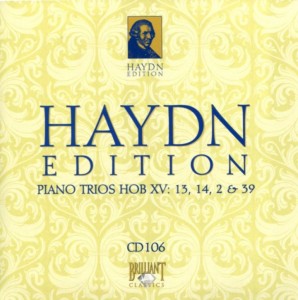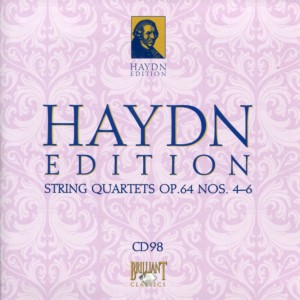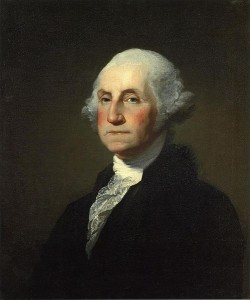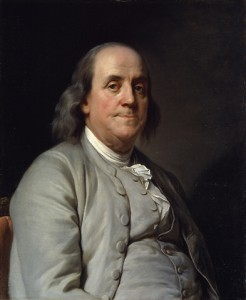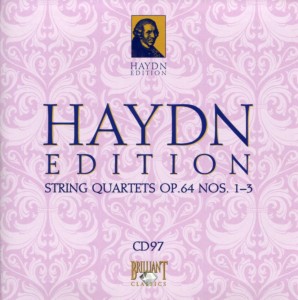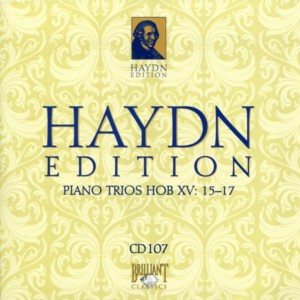 Another great CD of Haydn’s Piano Trios, this time with a distinct and immediately noticeable difference: the introduction of a flute.
Another great CD of Haydn’s Piano Trios, this time with a distinct and immediately noticeable difference: the introduction of a flute.
In other words, a change in players: flautist Marion Moonen in, violinist Remy Baudet out.
It’s still a trio – the Van Swieten Trio, in point of fact – but now the music takes on a different sound.
I’m a big fan of the flute. That’s why I like Jethro Tull. And Red Priest.
Add a flute to a song – especially a rock/metal song – and you have my undivided attention.
And so it was whe n I pushed Play on today’s CD. “A flute!” I said to myself. “Am I listening to the right CD?”
n I pushed Play on today’s CD. “A flute!” I said to myself. “Am I listening to the right CD?”
I looked at it and realized it was, indeed, Haydn CD 107: Piano Trios HOB XV:15-17.
But a flute! Now, you’re talkin’, Joseph!
Now would be a good time to introduce all of the players. So…
Providing the music for these wonderful Piano Trios is the Van Swieten Trio, which consists of:
Bart van Oort fortepiano
Marion Moonen flute
Jaap ter Linden cello
A brief bio of Marion Moonen from the web site The Bach Players:
Marion Moonen studied flute at the Royal Conservatoire in The Hague with Paul Verhey and Frans Vester, and Baroque flute with Wilbert Hazelzet. She is a member of various ensembles and orchestras, including the Amsterdam Baroque Orchestra, the Kleine Konzert of the Rheinische Kantorei with Hermann Max, the Van Swieten Society, and Concerto d’Amsterdam. Since the formation of the ensemble Musica ad Rhenum in 1992 she has performed and recorded much of the repertoire for two Baroque flutes with flautist Jed Wentz. She features on recent recordings with Wilbert Hazelzet, the Van Swieten Society, the Attaignant Consort, and other chamber groups.
Here’s a list of Haydn’s piano trios. The are referred to by their Hoboken catalog names, and their date of composition is not always certain. So I’ll Continue reading

